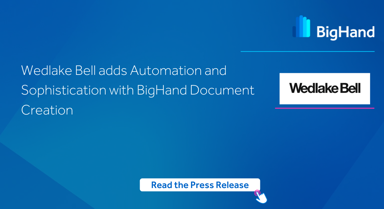Not so long ago, I was adding some descriptive text into a development story in Azure DevOps, and found it was rebelling against my formatting instructions. I’d done the classic – copying some text in from another location, and the new bullet point wasn’t in the same position as the others, and suddenly, I was fighting with a text editor which wasn’t doing what I expected or wanted.
It served as a reminder, that this is the experience for many people using Word. There’s nothing more frustrating than working with a tool that’s meant to make our lives easier, and it seems to go out of its way to be difficult. I know it’s not personal, but all the same…
Consider the situation in law firms; knowledge is the lifeblood of the organisation, but it’s key that this can be rendered to a legal document format that communicates that information, and expertise while remaining on-brand.
What makes a good legal document?
All law firms want documents that will represent them in terms of professional communication, which means:
- Content that is accurate and written with legal precision.
- Accurate clause and paragraph numbering throughout the document.
- Consistent branding that reflects the firm’s formatting for items such as fonts, line spacing, headings, and standard layouts for blocks of text.
The first bullet point is the transferring of the author’s expertise into written form, the remaining items are presenting it in a way that’s easy to read, technically correct, and represents the firm’s brand identity.
It’s the latter ones that we want to make easy at BigHand. There aren’t many people out there that enjoy correcting document formatting and checking paragraph numbering. Besides, no one wants to spend more time on a difficult document than necessary, and correcting something problematic is far harder than keeping it on track in the first place.
Let’s make it easy
To save time and streamline the process of creating and editing legal documents, you need to start right at the beginning. Why provide solutions to fix problems if you can prevent them from happening in the first place, by eliminating as many frustrations as possible?
Regardless of how the document was created, you want your documents to be easy to work, and the result to be high quality. Whether it was created from scratch, generated from a precedent, or if you’re taking previously authored content and reusing it. I know, I know, it’s not best practice, but who hasn’t taken a document and done a ‘dupe and revise’ when under time pressure?
To do this you need:
- A good stable base – easy to access templates for the most common document types (letters, memos, agreements, etc), so you’re not reusing documents with unknown histories, based on templates from who-knows-where, or when.
- Predefined legal formatting styles that will apply consistent fonts, spacing, sizes, etc, as well as a set of numbering schemes that will work with the complex requirements of a legal agreement. For example, numbering that restarts automatically as needed, follows industry guidelines and facilitates automation like cross-referencing and tables of contents.
- Precedent documents and standard blocks of text, that are already formatted in the firm’s house style, where the content is regularly reviewed for accuracy.
- Integrations with reliable sources of data, so that details can be inserted into the documents easily at the appropriate locations, both at creation and during the authoring process.
- Easy methods for transferring text from other sources (or old documents) into the new document, leaving behind any unnecessary formatting or metadata, and using the firm’s latest templates and document layouts.
The solution
Dedicated legal document creation software can help with all these things, and more. Technology can save time and enable consistency. For example, by laying out text to the firm’s house style, present options at the point of document creation so the author can specify information and have it entered in multiple locations throughout the document, and provide the ability to add text blocks and approved content.
The solution should do this following native Word best practices and adhere to the firm’s brand, which leaves the author with a document that’s stable and easy to work with – from the outset.
If you and your document authors don’t have these tools available, consider how much time and frustration could be saved if you did. Template management software, like BigHand Document Creation, can help reduce support calls and DPU hours needed and facilitate the creation of documents that represent the firm’s branding, and most important of all reduce risk.
If you want to know more about any of these items, do get in touch. I’m happy to share my experiences and to discuss Word formatting best practices because I am one of those strange people that enjoys fixing problem documents …but not as much as I like stopping them from breaking in the first place!
To learn more register here to join the next BigHand Document Creation webinar "How to Conquer Legal Document Excellence."






